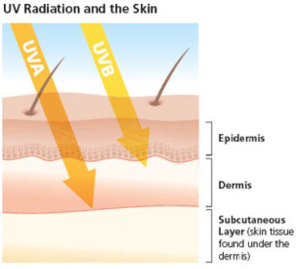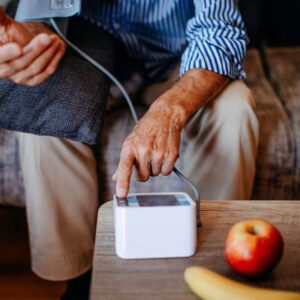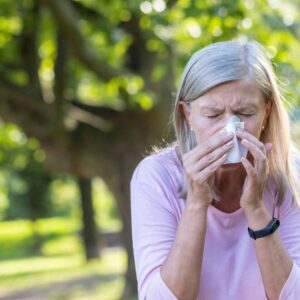
Are Your Windows Making You Sick?
- Winter weather isn’t the only culprit when it comes to catching the flu
- 93 percent of your time is spent in the wrong light
- A clear choice for boosting your immune system
Dear Reader,
“Ehh, it’s just a bit longer, nothing lasts forever… Plus, I have a window in my office, so I get plenty of sunlight — even when it’s cold outside. I should be fine.”
This is what I have been telling myself for the last few months.
Like many, I am counting down the days to March 20. This date marks the first day of spring for 2016 — but more importantly, the beginning of more sunshine, and warmer weather.
However, the most significant benefit of the equinox, for me anyways, is the ability to naturally increase my vitamin D levels.
Since, as you may already know, one of the easiest ways to increase vitamin D levels is through natural sun exposure. Sadly, these short, cold, and dark days of winter haven’t provided many sunny opportunities.
But I always assumed that the sunlight shining through the windows in my car, office, and apartment was helping to increase my vitamin D levels.
As it turns out — I was totally wrong.
In fact, the sunlight from windows does more harm than good — and not just to your vitamin D levels.
We will explore the health dangers of window sun exposures — including what it can mean for your health during the cold and flu season.
And later I will explain how to keep your vitamin D levels in check during the winter, as well as the rest of the year.
First, let’s talk about the production of vitamin D and the potential dangers shining through our windows.
![]() Dangerous Rays
Dangerous Rays
Vitamin D is a fat-soluble steroid hormone.1 Vitamin D3, specifically, is the natural D vitamin your body produces through sunlight exposure. Vitamin D3 forms in the skin when ultraviolet B (UVB) light from the sun is present.2
When UVB light touches your skins, a cholesterol found in your skin turns into vitamin D3 and it’s released into the bloodstream and sent to the liver for further processing.3 UVB rays are the reason sunshine is so often the natural prescription for a healthy vitamin D3 level.
And while UVB in small doses helps vitamin D3 production, too much UVB can be a bad thing.
UVB is the type of light responsible for sunburns and plays an important role in skin cancer development and has a hand in sun-aging.
Unfortunately, UVB is not the only ultraviolet light you absorb during sun exposure.
In addition to the vitamin D3-boosting UVB rays, you are also receiving a dose of ultraviolet A (UVA) light (the rays that cause skin tanning) — and at a much higher level.
This is due to UVA rays making up 95 percent of the UV radiation that reaches the Earth’s surface and being 30–50 times more prevalent than UVB rays.
Another factor that makes UVA rays more intense than UVB rays is that UVA rays are present year-round in equal intensity during daylight hours, and can even penetrate clouds and glass. UVB rays are only present for a certain window of daylight hours, depending on the season.
Also, UVA rays penetrate the skin at a deeper levels than UVB rays. Due to this, they can increase skin wrinkling and aging.
But that is not the worst news about UVA rays. Over the past two decades, more and more evidence indicates that UVA rays can damage cells found in the top layer of the skin, the epidermis. This is the layer where most skin cancers occur.4,5

Photo credit: skincancer.org
And to further the winter light issue, most Americans don’t get their sun exposure from the outdoors. Instead, they rely on the windows in their homes, offices, and cars to provide their daily rays.
In fact, according to the EPA, Americans spend 93 percent of their lives indoors, 87 percent in a building, and 6 percent in a car.6
This means you are getting a majority of your light exposure through glass, regardless of the season.
At this point, you may be wondering why this is such a problem? Any light is better than none, right?
Wrong.
The problem is most windows filter out only UVB rays, not UVA.
So every time you are exposed to sunlight through a window, you are getting a big dose of wrinkle-creating, cancer-causing UVA light and zero vitamin D3-boosting UVB.
And while this is very disturbing news, the effects of a vitamin D3 deficiency are just as devastating, especially in the wintertime.
![]() Your Body Needs Vitamin D
Your Body Needs Vitamin D
As you may have already heard, vitamin D is essential for many functions in the body, including bone health and the prevention of osteoporosis.
However, in more recent years, it has become clear that vitamin D plays a key role in immune functions. Studies have shown that those with low levels of vitamin D have a greater risk of developing influenza.7
Vitamin D helps boost immunity by raising levels of naturally occurring antibiotics and lowering levels of inflammatory proteins called cytokines.7 This increase in natural antibiotics will help to fight off invading viruses and germs, plus the decrease of inflammation may help your immune system fight off infections more effectively.
A study in JAMA Internal Medicine found that folks with the lowest vitamin D blood levels reported having considerably more recent cases of the flu or colds.
Dr. Adit Ginde, head author of the study reported, “The findings of our study support an important role for vitamin D in prevention of common respiratory infections, such as colds and the flu. Individuals with common lung diseases, such as asthma or emphysema, may be particularly susceptible to respiratory infections from vitamin D deficiency.” 8
Also, winter is when influenza epidemics occur. This makes it crucial to have a healthy vitamin D level for a strong immune system.
Ten–15 minutes of sunshine without sunscreen is the recommended practice to keep your vitamin D levels in check.9
However, getting outdoor sun exposure during the wintertime (or anytime, for that matter) is not a reliable option for many people. And since most windows don’t provide adequate sunlight, supplementation is the clear and likely most effective choice for maintaining your vitamin D levels.
In addition, when you are looking for a vitamin D supplement, be sure your choice is an oil-based softgel. Olive oil is the best type, if available. Some supplement manufacturers use soybean oil, which may be a GMO ingredient.
Also be sure that the soft gel casing doesn’t contain GMO ingredients.
If you have anything you would like to share about vitamin D, please do! nmoore@lfb.org
Live Well,

Natalie Moore
Managing editor, Living Well Daily
P.S. Wednesday, we gave readers a sneak peek at our Living Well Daily Insider letter. As you can see, the bonus content is full of added tips and tricks to help you on your quest for better health. If you are interested in signing up for the insider, call customer service at (844) 266-2089.
Sources
[1] Vitamin D: A Hormone for All Seasons – How much is enough? Understanding the New Pressures
[2] How do I get the vitamin D my body needs?
[3] Vitamin D & the Sun: What does the sun do for me?
[5] Watch Out for Skin Cancers and Photoaging on the Left Side of Your Body
[7] Influenza
[9] Vitamin D
[10] Vitamin D
Written By Natalie Moore
Natalie Moore is a dedicated health researcher with a passion for finding healthy, natural, and science-based solutions. After a decade of direct healthcare experience in western and natural medicine, she was involved in public health research before joining Living Well Daily.
View More Free Articles
Can't Shake Negative Thoughts? Check Your GUT First
Everyone struggles sometimes to stay positive or see the bright side of things. It’s part of being human. You might think those negative thoughts start in your brain—but it’s more complicated than that. A simple change to your daily habit can help dial down those negative feelings. New research suggests that this simple strategy could...
Repair Your Gut Barrier With the “Sunshine Cure”
Happy Fourth of July! As you celebrate with sunshine, good food, and great company, don’t forget—those summer rays aren’t just lifting your spirits… they’re also working behind the scenes to protect your gut and boost your health. Your gut health is more important than most people realize. It directly affects your overall well-being—from immunity to...
The 5 Health Numbers Your Doctor Wishes You'd Track
Have you ever been told you should “advocate” for yourself when it comes to your healthcare and wondered what that really means? It’s not just a buzzword—it’s a powerful concept that empowers you to take charge of your own health journey. In fact, it could save your life. Being your own best health advocate starts...
Do THIS Every 20 Minutes to STOP Digital Eye Strain
Our eyes are under assault—they are the true victims of our current digital age. And it’s because we are constantly glued to screens… phones, tablets, computers, TVs—you name it. Unfortunately, that screen time is taking a serious toll. Digital eye strain affects millions worldwide. In fact, up to 50 percent of computer users could develop...
Mailbag: The Calcium Mistake That's Hardening Your Arteries
“What type of calcium is best to take with bisphosphonates for osteoporosis? I know some varieties can build up in arteries. Thanks for the help.” —Bone Builder Hi Builder, When a patient asks me about calcium, I ask them a peculiar question in return… “Ever wonder how elephants and giraffes build and maintain their massive...
Doctor-Approved Method to Ditch Blood Pressure Meds
In a world where drug solutions dominate healthcare, it’s refreshing to discover that best remedies sometimes don’t involve a single pill. A groundbreaking study shows simple relaxation techniques could be your secret weapon against one of America’s deadliest health conditions. Best of all? It’s free, easy to start right away—and your results are bound to...
Trouble Hearing? Your Heart Could Be at Risk
With research exploding and data pouring in, scientists are uncovering some weird (and surprisingly helpful) health connections. Today’s odd couple? Hearing loss and heart failure. Turns out your ears and your ticker are more connected than you ever imagined. A major study published in the journal Heart looked at over 164,000 people for nearly a...
Stay Up Late? It Could Destroy Your Mental Health
If you dread mornings but come alive at night, there’s concerning new research you need to know about. A recent study found that “night owls” are at higher risk for depression. But before you rush to set your alarm to get up with the sun tomorrow, there’s more to the story… Chronotypes are essentially your...
Go from Flabby to Fit with this Common Vitamin
If you’re like many of us, you woke up one day, looked in the mirror, and realized you’re no spring chicken anymore. Even worse—when you weren’t paying attention—it seems you somehow misplaced the muscles of your youth and have gone from fit to flabby. Aging has a way of humbling us like that. But scientists...
Seasonal Allergy “Off Switch” Discovered in the GUT
“Doc, why am I suddenly suffering from seasonal allergies when I’ve never had them before?” It’s a question I get all the time—and my answer might surprise you. Stop looking up at the trees—and start looking down at your gut… Your sneezing fits, itchy eyes, and runny nose might have more to do with what’s...









